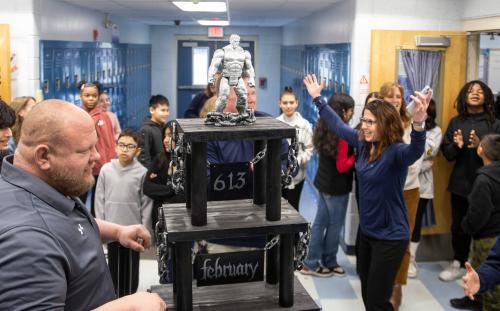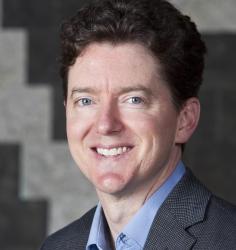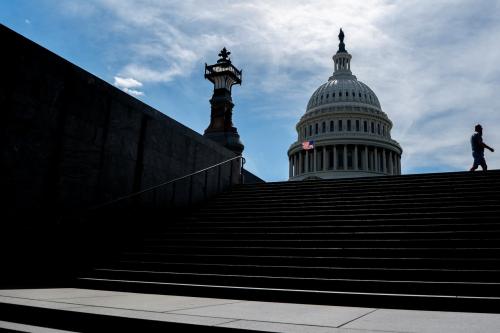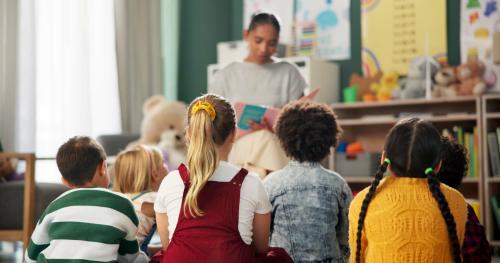Just before COVID-19, my wife and I were looking for a new school for my youngest daughter. Then entering middle school, we started by looking at the usual options, though we live in New Orleans, so the “usual options” are a bit unusual. Known for having no traditional public schools, we instead explored the city’s abundance of charter and private schools. We also had one option that was unusual, even by New Orleans standards—a “microschool.”
Yes, the main defining feature of “micro” schools is that they are small. This one operated in a storefront next to a coffee shop I visited occasionally. It was so small that I drove by most days without even noticing it was there. We went to an open house to learn more. I was intrigued. Each child had a place. Most had a desk, a bean bag, a small bookshelf, and posters and pictures of family and friends—a cross between standard office cubicles and children’s bedrooms.
The teacher explained how it worked. There were about a dozen students, spanning a five-year age range. Each child had an individualized learning plan that involved a combination of online curricula (mostly Khan Academy) and large projects. They operated the school democratically; students voted on issues like noise levels and group activities.
Though we ultimately opted for a traditional, larger school, I had a sense that microschools would be something to watch. I wasn’t quite sure why at the time, but now, through my twin lenses as a parent and economist, I see it more clearly: Microschools have advantages over both traditional schools and homeschooling.
To see these advantages, we have to think about the factors that make schools work well for students and their families. When we do, a surprising picture emerges.
Some factors that affect academic success
Let’s start by considering some of the factors that can affect whether a school fulfills the key objectives of developing children’s skills, knowledge, values, and habits. These factors include:
- Personalization. Some children absorb academic material easily and others with more difficulty (or differently). To succeed with each child, schools need to provide individualized attention.
- Educator specialization. Teaching is challenging and requires a deep and varied skillset. Most teachers are very good at some things but not at everything. In larger schools, teachers can specialize more and focus on what they’re good at, to the benefit of their students.
- Economies of scale. Once a school is up and running, additional students can be added at relatively little cost. For this reason, larger schools can be better (or more efficient), at least up to a point.
Of course, this is not a comprehensive list. It’s also not the language most educators would use to talk about “what makes a good school.” But, as I think you’ll see, it is useful language for understanding microschools.
Keys to popularity
Parents care deeply about how much their children learn. But they also have other, often more practical considerations in choosing a school:
- Curricular preferences. Parents vary in what they want their children to learn and experience. Some parents, for example, want an emphasis on STEM while others prefer the arts or a religious education.
- Friends and social networks. Schools are places where children find friends, where they play. Parents also develop their own social networks through their kids’ schools, getting to know one another in playdates and at birthday parties. Socialization is another key role for schooling.
- Geographic distance. Children must get to and from school every day. This is why one of the most consistent findings in education research is that parents prefer to send their children to schools nearby.
- Child care. Many educators dislike talking about the childcare function of schools because it suggests they are just babysitting. But keeping children safe and freeing up parents’ time are key roles that schools play. As we saw during COVID school closures, it’s hard for parents (usually, mothers) to do much else when caring for their children at home.
These “keys to success” and “keys to popularity” are fraught with tensions. We want many, well-fitted options that are close to home. If we do that, though, then schools will be small and inefficient, making poor use of educators’ expertise. This is why there is no perfect school system. There are always tradeoffs. And different systems resolve these tensions in different ways.
How traditional schools, and especially homeschools, struggle to resolve the tensions
You may already see how traditional public schools and homeschooling approach these tradeoffs differently. Traditional schools leverage economies of scale and specialization and provide lots of opportunity for friendship and extracurriculars. However, you have to travel to get there, and some schools struggle to leverage their size without sacrificing personalization.
Homeschooling, in contrast, provides the smallest imaginable environment and requires students to traverse only the distance between their bedrooms and the kitchen table. As parents are both the consumers and the producers—the teachers—they can, in theory, give their children exactly what they (parents) want, educationally. But if parents are homeschooling, they can’t work outside the home. Moreover, few parents have formal teacher training. This loss of specialization with homeschooling is actually worse than it looks. It’s not just that homeschool parents don’t get to specialize in teaching—they don’t get to specialize in anything at all, neither teaching nor a paid vocation.
This is also why homeschooling is impractical for all but a tiny share of the population—e.g., two-parent households where one person has a well-paying job, the other is committed to leading every element of their children’s upbringing and forgoing career aspirations, and their preferences and needs are far enough removed from traditional schools that the sacrifice might be worth it. This is why, even after COVID, only about 1.9-2.7 million children—no more than about five percent of school-age children in the U.S.—are being homeschooled. Those estimates come from a 2023 analysis by The Washington Post.
Could microschools be the “best of both worlds”?
Microschools combine some of the advantages of homeschooling and traditional schools. If (I say, when) this market develops, there will be many times more schooling options within reach of a family’s home than traditional public schools can provide. With so many options, it will be easier to find something that matches parent preferences and student needs.
Unlike traditional schools, children in microschools are unlikely to get lost in the shuffle and anonymity of large schools, or be bullied, or lack personalization. In the school we visited, the teachers clearly got to know the students very well.
Unlike homeschooling, microschools provide at least some economies of scale and children learn under a trained and/or experienced educator. Perhaps most importantly, parents are freed up to do other things, including working outside the home. If three homeschool parents, for example, band together so that two can work outside the home and pay the third—presumably the one with teaching experience—they might all be better off financially while perhaps getting much of what they want in their children’s schooling.
This could work well for a broader audience than you might think, precisely because the range of options is so wide. For example, what if a trained special education teacher opened up a microschool specifically for that population? What if they specialized in a very particular condition like ADHD? Hyper-specialization could be the order of the day. Microschools could hone in on specific professions or specific arts. Suppose someone is really committed to playing an instrument or ballet. They could work with artistic studios in the area to build in extra time for those activities. Some traditional schools “specialize” in math and science, but a microschool could go even further. They only need to find a dozen students who are interested in, say, pre-med or coding. Gifted students, instead of taking a course from a high school teacher, could take one on an online platform designed for college students.
But, again, there are always tradeoffs. Some of those tradeoffs are social. Remember, in the school we visited, there were only a dozen students across five age groups. Also, parents of microschoolers will also have to look elsewhere for extracurricular activities. These, too, require specialized training and, for many activities, a critical mass of students. The same is true for other health-oriented services, like counselors and nurses, which likely won’t be available in microschools.
Also, to be clear, I am not arguing that microschools will necessarily be better on any of the usual academic metrics like test scores. This innovation is simply too different from anything we have seen to make a prediction like that. My suspicion is that, because they operate with trained teachers, they will be better on academic grounds than homeschooling and its close cousin, virtual schooling, where the evidence suggests possibly large losses in achievement. They will likely not perform as well as traditional, larger schools. But given the increasingly test-driven element of traditional public schools, microschools might make up for this with their project orientation, which could improve writing skills, facilitate more independent thinking, and instill a greater passion for certain subjects and topics.
Whether or not they are “effective” on the usual dimensions, my point is that microschools will be popular. This is one reason I have made you suffer through a discussion of the economics of the situation. To understand popularity, we have to think about markets, and that requires economics.
There is much more to say here than I can fit in this piece. For example, why is this happening now—what changed? What are the different forms that microschools might take? Will states need to change policies to make microschooling viable? And what about the broader effects on schooling as a whole? Will this have unintended consequences for other types of schools if microschools take off? I’m planning to follow up on some of these questions in the months ahead.
We might not have answers to all these questions yet, but we can answer one of them. Will microschools become a significant player? Yes, I believe they will. While the education sector tends to change slowly, they will no longer be the obscure experiment my wife and I stumbled upon before the pandemic, but an option on the regular menu that parents consider in the school choice process.
The Brookings Institution is committed to quality, independence, and impact.
We are supported by a diverse array of funders. In line with our values and policies, each Brookings publication represents the sole views of its author(s).








Commentary
The coming rise of microschooling: Where old economics meets the new schooling market
June 6, 2024